Tech. sheet
- Manufacturer: Fender
- Model: Rumble 75
- Series: Rumble
- Category: Bass Guitar Combo Amps
- Other names:rumble75
We have no technical specifications for this product
but your help will be much welcomed
»
Videos
User reviews
4.0/5(3 reviews)
5
33 %
4
33 %
3
33 %
2
1
Fender Rumble 75
Published on 05/20/11 at 15:00The Rumble 75 is the bigger, powerful brother of the Rumble 15 and 30 by Fender. I'll bet the Rumble 75 has a later curfew too!
I played this against the Fender Rumble 30 planning on buying whichever sounded better to me. To be honest 75 watts and 30 aren't too far off. This amp was only a hair louder than the 30, but lacked the punch and attack of the 30. I believe that is due to the bigger speaker. The price tag on this puppy is $249
<a href="http://www.guitarvideochannel.com">http://www.guitarvideochannel.com</a>
The drive feature is cool. It goes before the EQ so it is sort of like having a distortion pedal built right into the amp. The knobs are drive and blend. Drive...…
I played this against the Fender Rumble 30 planning on buying whichever sounded better to me. To be honest 75 watts and 30 aren't too far off. This amp was only a hair louder than the 30, but lacked the punch and attack of the 30. I believe that is due to the bigger speaker. The price tag on this puppy is $249
<a href="http://www.guitarvideochannel.com">http://www.guitarvideochannel.com</a>
The drive feature is cool. It goes before the EQ so it is sort of like having a distortion pedal built right into the amp. The knobs are drive and blend. Drive...…
Read more
The Rumble 75 is the bigger, powerful brother of the Rumble 15 and 30 by Fender. I'll bet the Rumble 75 has a later curfew too!
I played this against the Fender Rumble 30 planning on buying whichever sounded better to me. To be honest 75 watts and 30 aren't too far off. This amp was only a hair louder than the 30, but lacked the punch and attack of the 30. I believe that is due to the bigger speaker. The price tag on this puppy is $249
<a href="http://www.guitarvideochannel.com">http://www.guitarvideochannel.com</a>
The drive feature is cool. It goes before the EQ so it is sort of like having a distortion pedal built right into the amp. The knobs are drive and blend. Drive naturally adjusts how much distortion the amp gets and blend adjusts the frequency so you don't loose any clean bottom end.
Overall the amp sound just a little to muddy for me. When playing with less power you need to be able to dial in a sharp EQ to cut through and this amp was just not showing me any love.
Well built for its price category. It is covered in tolex and the kickback design offers you more options on where you want to throw the sound.
I really can't say this is a bad amp, but I didn't not love it either. I would highly suggest test driving one before you decided to purchase it. If you don't mind a little less power, checkout the Rumble 30.
This review was originally published on http://www.musicgearreview.com
I played this against the Fender Rumble 30 planning on buying whichever sounded better to me. To be honest 75 watts and 30 aren't too far off. This amp was only a hair louder than the 30, but lacked the punch and attack of the 30. I believe that is due to the bigger speaker. The price tag on this puppy is $249
<a href="http://www.guitarvideochannel.com">http://www.guitarvideochannel.com</a>
The drive feature is cool. It goes before the EQ so it is sort of like having a distortion pedal built right into the amp. The knobs are drive and blend. Drive naturally adjusts how much distortion the amp gets and blend adjusts the frequency so you don't loose any clean bottom end.
Overall the amp sound just a little to muddy for me. When playing with less power you need to be able to dial in a sharp EQ to cut through and this amp was just not showing me any love.
Well built for its price category. It is covered in tolex and the kickback design offers you more options on where you want to throw the sound.
I really can't say this is a bad amp, but I didn't not love it either. I would highly suggest test driving one before you decided to purchase it. If you don't mind a little less power, checkout the Rumble 30.
This review was originally published on http://www.musicgearreview.com
See less
00
»
Mate and reliable
Published on 04/06/12 at 14:22 (This content has been automatically translated from French)The Fender Rumble 75 combo has is a transistor, as the name says it delivers 75 watts into 8 ohms, it is equipped with an HP 12 "Fender signed up cash 100 Watts.
Designed to "tilt back" it can tilt backward for better sound dispersion.
On the front are:
A passive bass input jack
An input jack for active bass
1 volume knob
Section 1 "overdrive" with a gain knob, a knob mixing between sound "clear" and a saturated and "push / push" to activate or deactivate the section.
A management section mediums called "shape" with two buttons "push / push" to boost the first medium, for the second dig.
Equalization section 1 (Low / Medium Low / Medium High / Acute)
1 RCA input "in...…
Designed to "tilt back" it can tilt backward for better sound dispersion.
On the front are:
A passive bass input jack
An input jack for active bass
1 volume knob
Section 1 "overdrive" with a gain knob, a knob mixing between sound "clear" and a saturated and "push / push" to activate or deactivate the section.
A management section mediums called "shape" with two buttons "push / push" to boost the first medium, for the second dig.
Equalization section 1 (Low / Medium Low / Medium High / Acute)
1 RCA input "in...…
Read more
The Fender Rumble 75 combo has is a transistor, as the name says it delivers 75 watts into 8 ohms, it is equipped with an HP 12 "Fender signed up cash 100 Watts.
Designed to "tilt back" it can tilt backward for better sound dispersion.
On the front are:
A passive bass input jack
An input jack for active bass
1 volume knob
Section 1 "overdrive" with a gain knob, a knob mixing between sound "clear" and a saturated and "push / push" to activate or deactivate the section.
A management section mediums called "shape" with two buttons "push / push" to boost the first medium, for the second dig.
Equalization section 1 (Low / Medium Low / Medium High / Acute)
1 RCA input "in the" to connect an external audio device (an odd choice 3'15 stereo input jack would have been more "modern")
1 headphone jack (which mutes the HP when headphones are connected)
1 Line Out (which does not intersect the HP when connected) for connection to console or multitrack recorder.
Entered for a footswitch to activate / deactivate the "overdrive
A switch for on / off
UTILIZATION
configuration simpler just plug in a bass, turn the amp with EQ knobs to noon and turning up the volume.
After just make some adjustments rather obvious, test management section of mediums, possibly part overdrive (personally I do not use it in my sound then activate one or two times to test).
Honestly not need the manual as the settings speak for themselves. It takes no more than 10 minutes to go around and therefore the opportunities we quickly find the sound you need.
The settings are effective and moving a few percent lower adjustment knob really affects the sound.
In my case I set the EQ as follows: 60% Low Medium Low Medium High 50% 50% 60% Acute, I used the digging of mediums to slap ... and basta
SOUNDS
The sounds are quite varied, I use it with a Squier Precision (classic vibe 60), a Squier VM Jazz Bass fretted and JB VM Frettless and without changing the settings one can easily perceive differences in sound.
I play mainly Rock Rhythm n Blues tint and Blues, the setting and its suited me so well that I can simply play with the tone knob of the bass to move from her Rhythm n Blues way to present a more rock, one based on the medium punch and bang, a slap on his way to 70's / 80's (Tony Oppenheim when I'm on accuracy, so with Louis Johnson Jazz bass)
The bass is well defined and not dribbling, the midrange is well managed and this acute without being brilliant. In short a well-balanced, I can send him a little bit of boost with a compressor pedal, the beast cash, supplies and does not flinch.
In short it's cool
OVERALL OPINION
I've had almost a year and no surprises since.
I use it in rehearsal and concert on the rehearsals, with the chance of not working with a lumberjack, but with a drummer whose versatile and precise strike, the 75 watts are more than enough (I have recordings to prove it ! arf!). If I had to play with a drummer more "brutal" I'd be directed to the 150 watts it is obvious.
Live in bar of sufficient magnitude and issued his well-defined, outdoor concert, taking line out is a real treat for sound engineers (not to install micro) and serves more than adequate return.
In short a quality / price ratio more than satisfactory, its power may seem a little "bastard" (not enough for rehearsals and concerts, and too much for the home games) but ultimately if your primary need is not a crazy power amp you have there a cheap, robust and reliable with a sound and a more user comfort as a result.
Listed sound my heart would look for a more Ampeg Ampeg but with the same budget that proposed a material less seduced me ... no worries, I found the amp I needed!
Designed to "tilt back" it can tilt backward for better sound dispersion.
On the front are:
A passive bass input jack
An input jack for active bass
1 volume knob
Section 1 "overdrive" with a gain knob, a knob mixing between sound "clear" and a saturated and "push / push" to activate or deactivate the section.
A management section mediums called "shape" with two buttons "push / push" to boost the first medium, for the second dig.
Equalization section 1 (Low / Medium Low / Medium High / Acute)
1 RCA input "in the" to connect an external audio device (an odd choice 3'15 stereo input jack would have been more "modern")
1 headphone jack (which mutes the HP when headphones are connected)
1 Line Out (which does not intersect the HP when connected) for connection to console or multitrack recorder.
Entered for a footswitch to activate / deactivate the "overdrive
A switch for on / off
UTILIZATION
configuration simpler just plug in a bass, turn the amp with EQ knobs to noon and turning up the volume.
After just make some adjustments rather obvious, test management section of mediums, possibly part overdrive (personally I do not use it in my sound then activate one or two times to test).
Honestly not need the manual as the settings speak for themselves. It takes no more than 10 minutes to go around and therefore the opportunities we quickly find the sound you need.
The settings are effective and moving a few percent lower adjustment knob really affects the sound.
In my case I set the EQ as follows: 60% Low Medium Low Medium High 50% 50% 60% Acute, I used the digging of mediums to slap ... and basta
SOUNDS
The sounds are quite varied, I use it with a Squier Precision (classic vibe 60), a Squier VM Jazz Bass fretted and JB VM Frettless and without changing the settings one can easily perceive differences in sound.
I play mainly Rock Rhythm n Blues tint and Blues, the setting and its suited me so well that I can simply play with the tone knob of the bass to move from her Rhythm n Blues way to present a more rock, one based on the medium punch and bang, a slap on his way to 70's / 80's (Tony Oppenheim when I'm on accuracy, so with Louis Johnson Jazz bass)
The bass is well defined and not dribbling, the midrange is well managed and this acute without being brilliant. In short a well-balanced, I can send him a little bit of boost with a compressor pedal, the beast cash, supplies and does not flinch.
In short it's cool
OVERALL OPINION
I've had almost a year and no surprises since.
I use it in rehearsal and concert on the rehearsals, with the chance of not working with a lumberjack, but with a drummer whose versatile and precise strike, the 75 watts are more than enough (I have recordings to prove it ! arf!). If I had to play with a drummer more "brutal" I'd be directed to the 150 watts it is obvious.
Live in bar of sufficient magnitude and issued his well-defined, outdoor concert, taking line out is a real treat for sound engineers (not to install micro) and serves more than adequate return.
In short a quality / price ratio more than satisfactory, its power may seem a little "bastard" (not enough for rehearsals and concerts, and too much for the home games) but ultimately if your primary need is not a crazy power amp you have there a cheap, robust and reliable with a sound and a more user comfort as a result.
Listed sound my heart would look for a more Ampeg Ampeg but with the same budget that proposed a material less seduced me ... no worries, I found the amp I needed!
See less
90
»
A very good Fender
Published on 06/25/11 at 04:40 (This content has been automatically translated from French)Transistors
UTILIZATION
Super easy to adjust
SOUNDS
Very good sound quality in all types jazz rock ...
Impeccable with my crack AEROLINE
OVERALL OPINION
2 months and it is enough to home.
Not seen on stage
UTILIZATION
Super easy to adjust
SOUNDS
Very good sound quality in all types jazz rock ...
Impeccable with my crack AEROLINE
OVERALL OPINION
2 months and it is enough to home.
Not seen on stage
02
»
Other Fender bass Guitar Combo Amps
-

Rumble 350
Bass Guitar Combo Amp
-
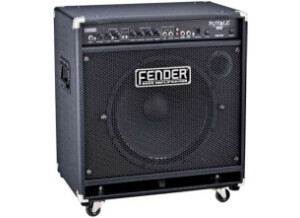
Rumble 150
Bass Guitar Combo Amp
-

Rumble 100 Combo 1x15
Bass Guitar Combo Amp
-
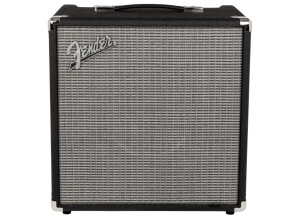
Rumble 40 V3
Bass Guitar Combo Amp
$387 new (1 offer) -
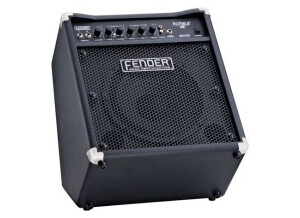
Rumble 30 Combo
Bass Guitar Combo Amp
-
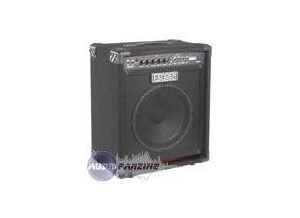
Rumble 60
Bass Guitar Combo Amp
-

Rumble 15 Combo
Bass Guitar Combo Amp
-
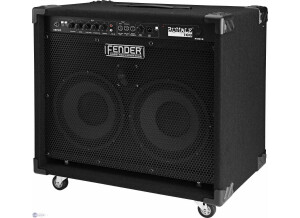
Rumble 100 Combo 2x10
Bass Guitar Combo Amp
$26 new (1 offer) -
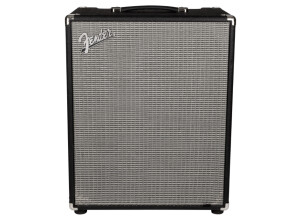
Rumble 500 V3
Bass Guitar Combo Amp
-

Rumble 25 Combo
Bass Guitar Combo Amp











